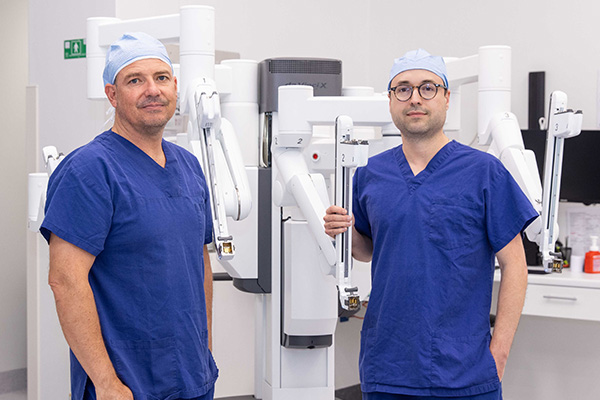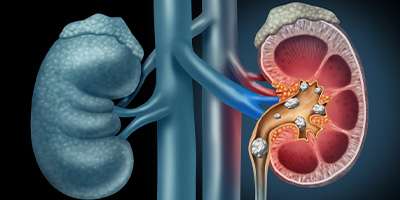Vasectomy
About The Procedure
This guide is intended to aid in the preparation for your upcoming surgery, assisting not only you but also your loved ones. It will equip you with the knowledge needed to take care of yourself during the weeks after being discharged from the hospital.
Upon undergoing a vasectomy, you will become sterilised and therefore unable to father children. Although reversal is an option, it is important to view the operation as permanent, as the process is both technically complex and costly, with success not being guaranteed.

What to Expect
A vasectomy is a surgical procedure that involves the removal of around 1cm of the vas above the testicle and the sealing of the two free ends by internal cauterisation to prevent sperm from passing beyond a specific point. Once all the stored sperm in the vas deferens are used up, the semen only contains fluid from the prostate and seminal vesicles. Although the percentage of sperm in the total volume is minimal, ejaculation after a vasectomy remains relatively the same.
However, despite the vasectomy procedure, the testicle continues to produce sperm, which are stored in the epididymis attached to the testes. Old sperm breaks down and are removed, while new ones are produced to replace them.
Arrival
When you arrive at the clinic, a nurse will accompany you to the procedure room, where the scrotum area will be shaved. It will be followed by the application of Emla cream and dressing to initially numb the area. The cream will numb the skin to a reasonable depth, which takes approximately 30-40 minutes to become effective.
During the injection of local anaesthetic, which most men dread, there will be little or no
sensation. After injecting the local anaesthetic and numbing the area, an incision of less than 1 cm will be made on each side and the vas will be manoeuvred to just under the skin and held in place with a special clamp. The vas will then be delivered through a tiny split in the skin and will be removed. The two ends of the vas will be sealed internally by cauterisation, reducing the chances of sperm leakage or re-joining. Both ends will also be stitched. After checking for any bleeding, the vas will be released, and it will fall back into the scrotum. The tiny split will receive a small stitch with a special absorbable/dissolvable material which does not require to be removed.

Complications That May Occur
Infection
In the event of an infected cut, noticeable indicators such as redness, tenderness, and swelling may appear, which would necessitate the use of antibiotics. To reduce the risk of infection, it is recommended that pre-operative instructions such as following proper showering guidelines, are strictly followed.
Granuloma
Granuloma, also known as sperm granuloma, is an uncommon complication, however, it can happen. A granuloma is a small, usually pea- or grape-sized lump of scar tissue that forms at the location where the two cut ends of the vas deferens are located, which can sometimes be painful.
If it gets bigger or is associated with intense pain, a minor surgical intervention might be necessary to remove the lump and effectively seal off the vas deferens once more.
Haematoma
Haematoma, which is the accumulation of blood in tissue, may occur after a vasectomy due to bleeding from small, thin-walled veins around the vas and can result in the buildup of a sizable blood clot. This can cause a painful egg-like swelling above the testicle, requiring several days of rest to resolve. Although the chance of developing a haematoma is less than 1%, bleeding into the skin may occur as well, leaving a painless black bruise. In rare cases, excessive bleeding can happen leaving the scrotum looking like a soccer ball. Unfortunately, with an increasing number of doctors who are not urologists doing this procedure, we have been receiving a substantial number of patients with late bleeding.
Testicular Pain
Pain in the testicles after a vasectomy is a common occurrence, typically lasting only a few days and presenting as a dull ache. However, some men may experience periodic aches in one testicle or the other for several months or even up to a year following the procedure. This type of pain is attributed to epididymis congestion, a condition that affects the structure responsible for storing sperm. While generally a minor inconvenience, the pain may persist on occasion, but our experience has shown that it typically resolves within 18 months. While rare, it is important to acknowledge this possibility. For more severe cases, the use of anti-inflammatory medication may provide relief.
Failure of Operation
The most serious complication of this procedure, commonly known as the failure of the operation, results in permanent consequences. This typically happens when men don’t allow sufficient time for the sperm in the vas above the operation level to be fully utilised, which usually takes six to eight weeks. In addition, there is a risk of developing a canal between the two ends of the vas, which would allow sperm to travel through and result in unwanted pregnancy. The occurrence of this complication is more likely in the first few weeks following the operation, making it important to undergo a sperm count approximately six to eight weeks after the procedure to ensure that all stored sperm has been used and that the ends have not reconnected. Although there is a theoretical possibility that the ends could rejoin years after the operation, this is exceedingly rare.
To decrease the likelihood of re-canalisation, a more extensive removal of the vas could be performed. However, if there are changes in circumstances, reversing the operation would become impossible and the occurrence of hematomas would be more frequent. If the sperm count remains positive after six weeks, a repeat evaluation every two weeks will be conducted until it becomes negative. In rare cases, a second vasectomy may be necessary due to persistently low sperm count. Although the possibility of pregnancy is minimal, as long as a single sperm is present in the ejaculate, there is always a theoretical chance. It is important to note that if a second procedure is required, no additional charges will be incurred.
Consent
You will have an appointment scheduled with your Urologist to provide you with an opportunity to discuss any concerns or queries that you may have about the information provided and the operation itself. During this meeting, you will be asked to sign a consent form, and you will be provided with an appointment and some tablets for your pre-medication (Diazepam 20mg).
Operation
An hour before your scheduled surgery time, it is advised that you take an in-depth shower. During the shower, you must wash your penis, scrotum, groin, and specifically the anus area thoroughly. Rinse yourself off and repeat the process three times to significantly decrease the bacterial count that could cause an infection. Use a clean towel to dry yourself and wear fresh underpants. As soon as you finish your shower, take the two 10mg Diazepam tablets, sit down and relax until it is time to come in for your surgery.
We want to preface that you mustn’t drive yourself to or from the surgery. After the operation, we will make the necessary arrangements for a post-operative sperm count.

Post Surgery
After the surgery, you should head straight home and rest for 4-6 hours. In case of any complications, you can contact our rooms, and your Urologist will see you. We will organize a phone or an in-person follow-up to check how you are doing. This will be with your doctor.
We recommend taking two days off from your normal employment, during which you should take it easy. This is especially crucial on the night of the surgery and the following day. You may resume sexual activity once you feel comfortable, but preferably not within 48 hours of surgery. Wearing tight underwear certainly helps with your recovery and also to have less pain.
Discharge
After your operation, we advise that you head straight home and lie on your bed or couch for the next four to six hours. If you feel any ache as the local anaesthetic wears off, you can use the Maxigesic tablets provided. We suggest taking some before you go to sleep that night. The usual dose is two tablets, every six hours.
For the next 1-2 days, depending on your progress, you should avoid exercise and heavy lifting, however, you can return to normal activity over a few days based on how comfortable you feel.
You MUST use contraception (like condoms) until you receive a clear sperm count. Your first sperm count will be around eight weeks post-operation. Ideally, semen should be collected through masturbation in the container provided and delivered to any Pathlab facility within approximately one to one and a half hours, ensuring that the form is handed in with the sample.
We will contact you with the result. If the sperm count is unclear, you will need to repeat the test after two weeks. Some individuals suggest having a second clear count one month later, but that is at your discretion. If you live outside Tauranga, we advise that you check with your nearest laboratory about the best time to drop off the sample.
Sperm Storage
If you have doubts about undergoing a vasectomy, we strongly recommend you DO NOT GO AHEAD with the surgery.
Vasectomy Reversal
This procedure involves removing the blocked and scarred portions of the vas and mobilising the two ends adequately to rejoin them using micro-surgical techniques. Because of the delicate nature of the surgery and the equipment required, the operation, on average, takes around 2 hours. Sperm will return to the ejaculate in about 85% of men, but only 40-50% will successfully father a child. The surgery is costly and the bottom line is that if you are not entirely sure whether you want to have more children in the future, then undergoing a vasectomy is not the operation for you.
For more information about your procedure please read through the information from The British Association of Urological Surgeons (BAUS).
Additional Resources
Vasectomy
Information about your procedure from The British Association of Urological Surgeons (BAUS)
Vasectomy Process
What's on this page
Other Services






